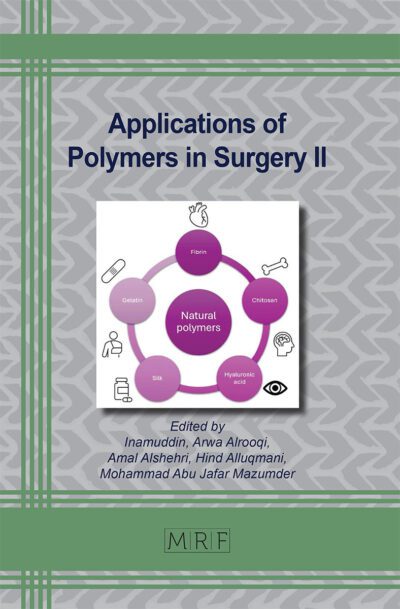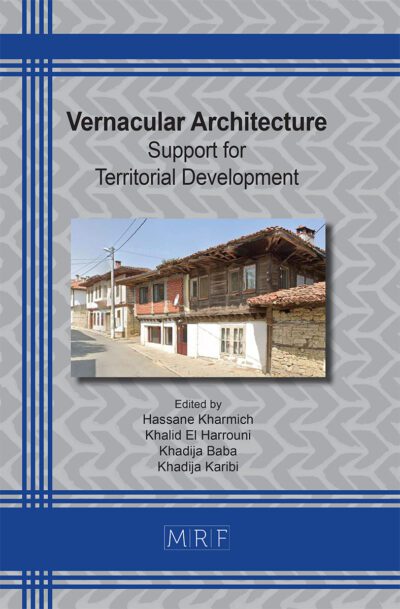–
Investigation of the reshaping process by hydroforming using magnetorheological fluids
PICCININNI Antonio, CUSANNO Angela, INGARAO Giuseppe, PALUMBO Gianfranco, FRATINI Livan
download PDFAbstract. The reshaping of End-of-Life (EoL) components is considered a promising approach to put in practice one of the virtuous strategies of the Circular Economy. The heterogeneity in a EoL part, the alternation of deformed/undeformed regions resulting from the manufacturing process, may hinder an effective reshaping into a brand new geometry. Therefore, the proper selection among the sheet metal forming processes to overcome such a limitation is of utmost importance. The present work, based on a full numerical approach, investigates the reshaping process of a disc-shaped EoL by hydroforming using a Magneto Rheological Fluid (MRF) as the forming medium. The basic idea is to combine the advantages coming from the flexibility of the hydroforming process with those from the MRF whose behavior (i.e. its viscosity affecting the shear stresses at the contact with the blank) can be tailored by adjusting the applied magnetic field. The reshaping approach is investigated according to two separate routes, differentiated by a different target geometry. A factorial plan of numerical simulations allowed to investigate the effect of the MRF behaviour as well as the geometry of the EoL component on the quality of the reshaped part, expressed in terms of accuracy in the final shape and thickness distribution.
Keywords
Aluminium, Reshaping, Hydroforming, Magnetorheological Fluids
Published online 4/24/2024, 11 pages
Copyright © 2024 by the author(s)
Published under license by Materials Research Forum LLC., Millersville PA, USA
Citation: PICCININNI Antonio, CUSANNO Angela, INGARAO Giuseppe, PALUMBO Gianfranco, FRATINI Livan, Investigation of the reshaping process by hydroforming using magnetorheological fluids, Materials Research Proceedings, Vol. 41, pp 2839-2849, 2024
DOI: https://doi.org/10.21741/9781644903131-311
The article was published as article 311 of the book Material Forming
![]() Content from this work may be used under the terms of the Creative Commons Attribution 3.0 license. Any further distribution of this work must maintain attribution to the author(s) and the title of the work, journal citation and DOI.
Content from this work may be used under the terms of the Creative Commons Attribution 3.0 license. Any further distribution of this work must maintain attribution to the author(s) and the title of the work, journal citation and DOI.
References
[1] Oberhausen, G., Zhu, Y., and Cooper, D. R., 2022, “Reducing the Environmental Impacts of Aluminum Extrusion,” Resour. Conserv. Recycl., 179(December 2021), p. 106120. https://doi.org/10.1016/j.resconrec.2021.106120
[2] Ashby, M. F., 2021, “Materials and Environment,” M.F.B.T.-M. and the E. (Third E. Ashby, ed., Butterworth-Heinemann, pp. 41–64. https://doi.org/10.1016/B978-0-12-821521-0.00003-7
[3] Tolio, T., Bernard, A., Colledani, M., Kara, S., Seliger, G., Duflou, J., Battaia, O., and Takata, S., 2017, “Design, Management and Control of Demanufacturing and Remanufacturing Systems,” CIRP Ann., 66(2), pp. 585–609. https://doi.org/10.1016/j.cirp.2017.05.001
[4] Cooper, D. R., and Allwood, J. M., 2012, “Reusing Steel and Aluminum Components at End of Product Life,” Environ. Sci. Technol., 46(18), pp. 10334–10340. https://doi.org/10.1021/es301093a
[5] Brosius, A., Hermes, M., Khalifa, N. Ben, Trompeter, M., and Tekkaya, A. E., 2009, “Innovation by Forming Technology: Motivation for Research,” Int. J. Mater. Form., 2(1), pp. 29–38. https://doi.org/10.1007/s12289-009-0656-9
[6] Takano, H., Kitazawa, K., and Goto, T., 2008, “Incremental Forming of Nonuniform Sheet Metal: Possibility of Cold Recycling Process of Sheet Metal Waste,” Int. J. Mach. Tools Manuf., 48(3), pp. 477–482. https://doi.org/10.1016/j.ijmachtools.2007.10.009
[7] Piccininni, A., Cusanno, A., Palumbo, G., Zaheer, O., Ingarao, G., and Fratini, L., 2022, “Reshaping End-of-Life Components by Sheet Hydroforming: An Experimental and Numerical Analysis,” J. Mater. Process. Technol., 306(June), p. 117650. https://doi.org/10.1016/j.jmatprotec.2022.117650
[8] Wang, P. yi, Zhang, W. zhuo, Wang, Z. jin, and Yi, J., 2016, “Effect of Viscosity of Viscous Medium on Formability of Al1060-O Sheet in Viscous Pressure Forming (VPF): An Experimental Study,” Int. J. Adv. Manuf. Technol., pp. 1–10. https://doi.org/10.1007/s00170-016-8429-3
[9] Zhu, X., Jing, X., and Cheng, L., 2012, “Magnetorheological Fluid Dampers: A Review on Structure Design and Analysis,” J. Intell. Mater. Syst. Struct., 23(8), pp. 839–873. https://doi.org/10.1177/1045389X12436735
[10] Kumbhar, B. K., Patil, S. R., and Sawant, S. M., 2015, “Synthesis and Characterization of Magneto-Rheological (MR) Fluids for MR Brake Application,” Eng. Sci. Technol. an Int. J., 18(3), pp. 432–438. https://doi.org/10.1016/j.jestch.2015.03.002
[11] Bucchi, F., Forte, P., and Frendo, F., 2012, “Experimental Characterization of a Permanent Magnet Magnetorheological Clutch for Automotive Applications,” ASME 2012 11th Bienn. Conf. Eng. Syst. Des. Anal. ESDA 2012, 4, pp. 345–355. https://doi.org/10.1115/ESDA2012-82284
[12] Li, F., Zhou, F. J., Wang, M. N., Zhu, S. Y., and Jin, C. C., 2017, “New Processing Research on Sheet Metal Bidirectional Pressure Forming Using a Magnetorheological Fluid,” Int. J. Adv. Manuf. Technol., 88(1–4), pp. 923–929. https://doi.org/10.1007/s00170-016-8831-x
[13] Cusanno, A., Piccininni, A., Guglielmi, P., and Palumbo, G., 2022, “Evaluation of the Rheological Behaviour of Magnetorheological Fluids Combining Bulge Tests and Inverse Analysis,” Key Engineering Materials, Trans Tech Publications Ltd, pp. 1778–1785. https://doi.org/10.4028/p-4irh1n












